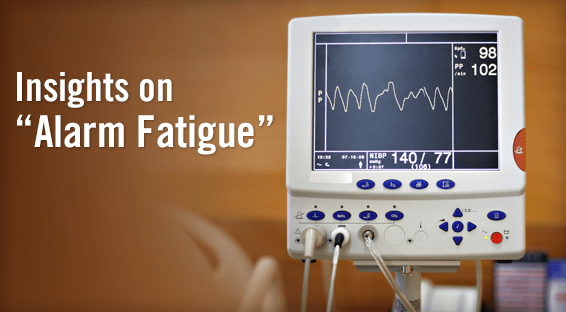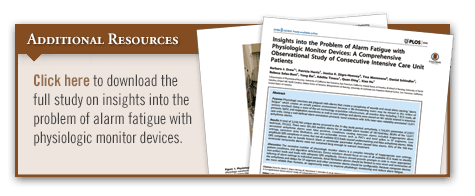The term “alarm fatigue” refers to when clinicians are desensitized by alarms, many of which sound off despite being false or clinically irrelevant. As a result, alarm sounds can become background noise and be perceived by clinicians as part of the normal working environment. Alarms can often be silenced without checking patients or permanently disabled by clinicians who feel the constant messages are bothersome. “Several agencies have warned of deaths due to alarm silencing on patient monitor devices,” says Barbara J. Drew, RN, PhD, FAAN, FAHA. “The FDA and the Joint Commission have also issued alerts about alarm fatigue being a major patient safety concern.”
To date, few studies have explored the topic of alarm fatigue to inform clinicians on what to do about this problem. To address this research gap, Dr. Drew and colleagues analyzed data from 461 adults who were treated in five ICUs at the University of California, San Francisco (UCSF) Medical Center over 31 days. The study, published in PLoS One, sought to provide a better understanding of the frequency and accuracy of alarms and false alarm causes of cardiac monitor alarms.
Significant Findings on Alarm Fatigue
The study showed that more than 2.5 million unique audible and inaudible alarms went off on patients’ monitoring equipment during the 31-day study period. Of this total, more than 1.1 million went off for cardiac arrhythmias, but about 89% of these were false alarms caused by computer algorithm errors. Despite restrictions at UCSF on the number of alarms that generate an audible tone to just those that are considered clinically important, there were more than 381,000 audible alarms. “The average alarm burden was 187 audible alarms per bed per day,” says Dr. Drew.
Several conditions were found to trigger alarms to go off excessively, including inappropriate alarm settings, persistent atrial fibrillation, and non-actionable events, such as premature ventricular contractions and brief spikes in ST segments. Low amplitude QRS complexes in some electrocardiogram (ECG) leads caused undercounting and false bradycardia arrhythmia alarms. Wide QRS complexes resulting from bundle branch blocks or ventricular pacemaker rhythm also caused false alarms. The authors noted that 93% of the true ventricular tachycardia alarms observed in the study were not sustained long enough to warrant treatment.
More to Come to Reduce Alarm Burden
“Alarm fatigue is a complex interplay of inappropriate user settings, patient conditions, and algorithm deficiencies,” says Dr. Drew. “Clinical staff must learn how to reduce alarm burden by setting alarms so that they are tailored to individual patients.” The study group notes that because computer devices are often more reliable than humans, an opportunity exists to improve physiologic monitoring and reduce alarm fatigue.




 TimH
TimH